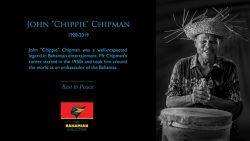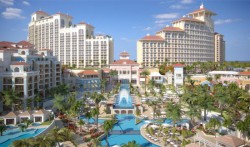KAMALAME CAY, BAHAMAS — Three or four hundred years ago, the Bahamas was a terrifying place. Spanish explorers called it the “baja mars,” the shallow seas, and with nothing to guide them but the comically inaccurate Ptolemy map, they lived in fear of tearing up their clumsy, round-bottomed ships on its thousands of uncharted reefs and bars.
Today, Nassau and Freeport have deep-water seaports, but the big-box cruise ships that have turned many Caribbean islands into drive-through tourist traps are still conspicuously absent throughout the Bahamas. What’s bad for tourism is sometimes good for tourists. There are more than 700 islands in the Bahamas, and most are idyllic hideaways serviced by a backwoods air strip and a couple of banged-up taxis. On some islands, the white-sand beaches and vast blue-green tidal flats are so deserted that it’s not unusual to get buzzed by a DEA helicopter while you’re out exploring, the implication being, if you’re not scouting for a drug cache, then what are you doing here?
Andros, at 200 kilometres from top to bottom, is the biggest island in the Bahamas, yet is one of the least developed. Owing to the rock fence surrounding it (the world’s third-largest barrier reef), the population hasn’t grown in three centuries. Overgrown with thickets of palmetto and thornbush, inhabited by feral hogs and huge iguanas, Andros is not exactly a tourist mecca. But at the north end of the island is one of the sweetest boutique resorts in the Caribbean.
Kamalame Cay was developed in 1995 by Brian and Jennifer Hew, native Jamaicans who discovered the site while on a fishing trip. Kamalame Cay is actually an island itself, a scythe of white sand and wind-gnarled pine separated from the mainland of Andros by a tidal channel so narrow you could drive a golf ball across it.
After considerable legwork and haggling, the Hews managed to purchase the little island, and set about raising the money to build an exclusive resort. “We like a place that’s very peaceful and quiet,” Brian says. “We want to give people the impression they’re visiting friends on a private island and staying in their own guest cottage.”
Out of mild habit, I follow developments in the Bahamian tourist industry as some people spend a few minutes a week tracking the rise and fall of penny mining stocks.
Kamalame Cay was launched in 1997, and I soon began noticing their display ads in classy American fly-fishing magazines like Gray’s Sporting Journal. If you like fly fishing, as I do, you come to understand that swanky resorts and lousy fishing generally go together. Wilderness and civilization are antithetical. If you want to find serious fishing in the Bahamas, you’re best travelling to some ragged out-island bonefish camp where the plumbing works for an hour a day and the chef’s idea of a picnic lunch is four bologna sandwiches and a jar of Kool-Aid. Women, if I may generalize, don’t usually gravitate to that sort of resort.
Kamalame Cay, however, seemed to be one of those rare Bahamian resorts that promises luxury accommodation surrounded by primeval bush country and unspoiled blue waters and tidal flats. Having stayed there with my girlfriend, Ann, for four days, I can now report that the resort itself is the ultimate romantic hideaway. But if a man brings a take-down fly rod, there’s nothing to stop him from slipping off midway through the trip to catch a fish or two, if he enjoys that sort of thing.
Ann and I flew to Nassau by scheduled airline (Air Canada runs regular non-stop flights to the capital), then took a 15-minute flight over to Andros in a little twin-engine Aztec. The resort’s driver met us at the airport and took us to Kamalame Cay, where a young Englishwoman named Margaret showed us around the resort.
The hub of Kamalame Cay is a Jamaican-style plantation house called the Greathouse, a breezy edifice with soaring ceilings and wide windows overlooking the sea. At night, it’s the gathering place for drinks and meals. During the day, it’s pleasantly deserted, occupied only by a few chefs working quietly in the kitchen and a curly-tailed gecko or two scampering across the sunlit veranda. Margaret explained that guests can swing past the Greathouse any time they feel thirsty and help themselves to cold drinks at the bar, just as they would if staying with friends.
Margaret issued us an electric golf cart — the main form of transportation on the island — and offered to show us around. Accelerating out of the palm-shaded driveway, we bounced down a sandy road lined by bougainvillea and lush palms.
We passed a succession of narrow driveways, each one leading to a private villa with its own stretch of beach. The villas are all slightly different. Some look like fanciful South Seas beach huts and some evoke the overgrown, grass-roofed rusticity of a cottage in the English countryside. The coral stone walls are clad with climbing blossoms, and the wide verandas face the deserted white beach.
By Jake MacDonald, The Globe and Mail
January 26, 2005



